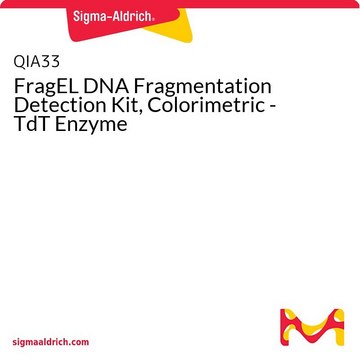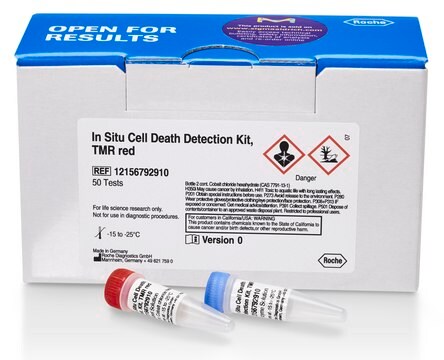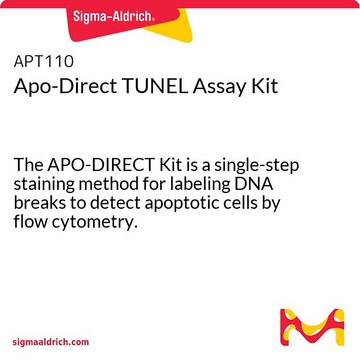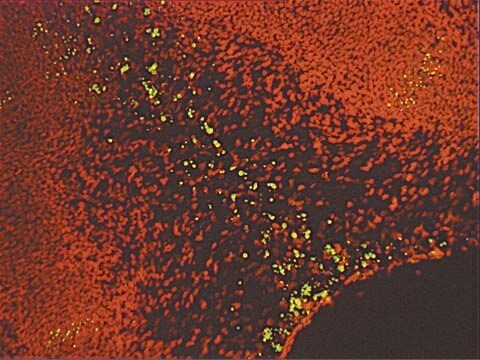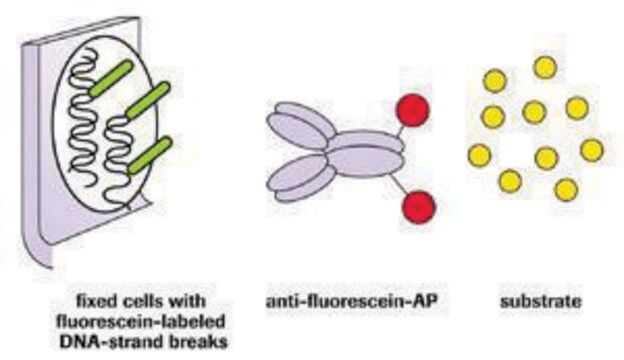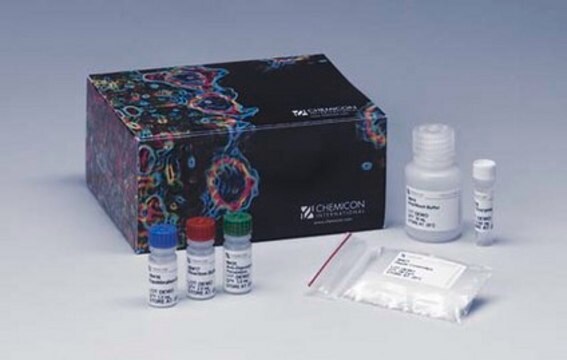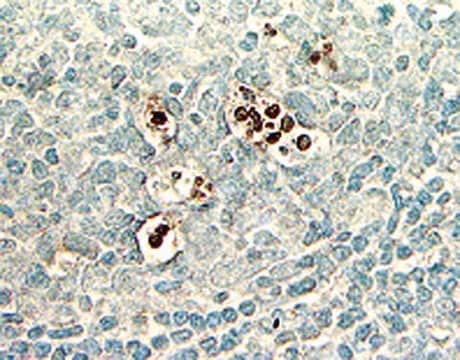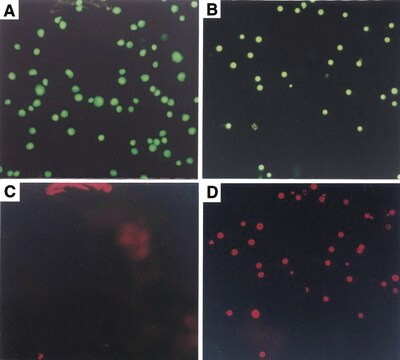QIA39
FragEL DNA Fragmentation Detection Kit, Fluorescent - TdT Enzyme
Synonym(e):
TUNEL Assay
About This Item
Empfohlene Produkte
Verwendung
sufficient for 50 tests
Qualitätsniveau
Speziesreaktivität (Voraussage durch Homologie)
all
Hersteller/Markenname
Calbiochem®
Lagerbedingungen
OK to freeze
avoid repeated freeze/thaw cycles
Methode(n)
flow cytometry: suitable
Aufnahme
sample type cell suspension(s)
sample type frozen section(s)
sample type paraffin section(s)
sample type fixed-cell preparation(s)
Nachweisverfahren
fluorometric
Versandbedingung
wet ice
Lagertemp.
−20°C
Allgemeine Beschreibung
Komponenten
Warnhinweis
Spezifikationen
Prinzip
Lagerung und Haltbarkeit
Sonstige Hinweise
Frey, T. 1997. Cytometry28, 253.
Shapiro, H.M. 1995. Practical Flow Cytometry, Third Edition. Wiley-Liss Inc., New York, New York.
Darzynkiewicz, Z., et al. 1992. Cytometry13, 795.
Gavrieli, Y., et al. 1992. J. Cell Biol.119, 493.
Fawthrop, D. J., et al. 1991. Arch. Toxicol.65, 437.
Martin, S.J., et al. 1990. J. Immunology145, 1859.
Wyllie, A. H. 1980. Nature284, 555.
Kerr, J. F. R., et al. 1972. Br. J. Cancer26, 239.
Rechtliche Hinweise
Signalwort
Danger
H-Sätze
Gefahreneinstufungen
Acute Tox. 4 Inhalation - Acute Tox. 4 Oral - Aquatic Chronic 2 - Carc. 1B - Eye Irrit. 2
Lagerklassenschlüssel
6.1C - Combustible acute toxic Cat.3 / toxic compounds or compounds which causing chronic effects
Analysenzertifikate (COA)
Suchen Sie nach Analysenzertifikate (COA), indem Sie die Lot-/Chargennummer des Produkts eingeben. Lot- und Chargennummern sind auf dem Produktetikett hinter den Wörtern ‘Lot’ oder ‘Batch’ (Lot oder Charge) zu finden.
Besitzen Sie dieses Produkt bereits?
In der Dokumentenbibliothek finden Sie die Dokumentation zu den Produkten, die Sie kürzlich erworben haben.
Kunden haben sich ebenfalls angesehen
Unser Team von Wissenschaftlern verfügt über Erfahrung in allen Forschungsbereichen einschließlich Life Science, Materialwissenschaften, chemischer Synthese, Chromatographie, Analytik und vielen mehr..
Setzen Sie sich mit dem technischen Dienst in Verbindung.